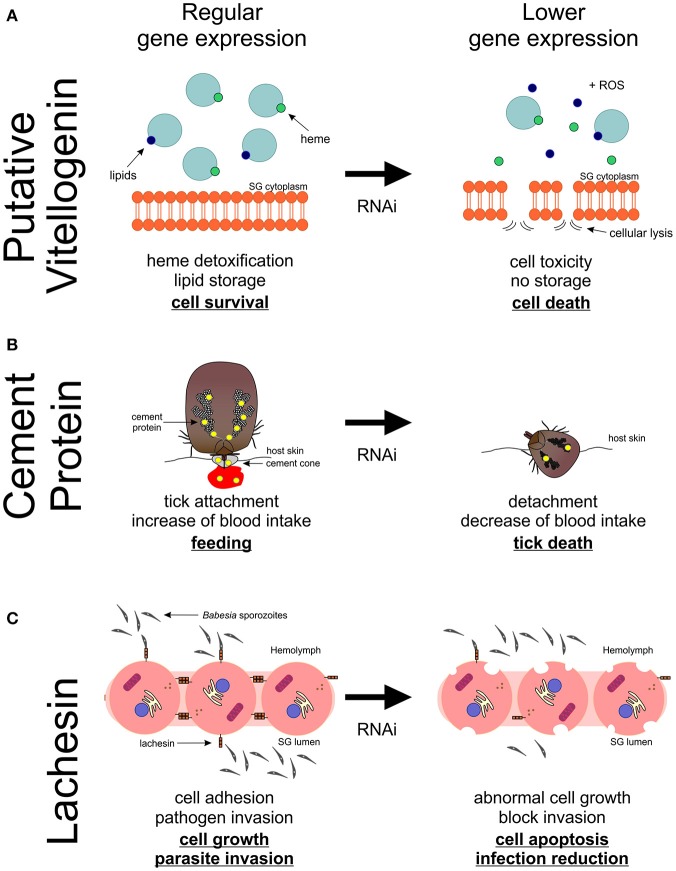Figure 6.
Proposed model of putative vitellogenin-3, cement protein and lachesin functions and its impact on Rhipicephalus bursa SG during feeding and Babesia ovis infection. (A) Vitellogenin-3 described function relates to heme detoxification and lipid storage contributing for cell survival. A decrease of the expression of putative vitellogenin-3 leads to deficient heme seizure, increasing the formation of reactive oxygen species (ROS) as well as cellular toxicity. Lipid storage is also compromised leading to an unbalance in the production of energy. (B) Putative cement protein is a component of the cement cone, which facilitates the tick attachment and feed on the host. An impact in the production of cement proteins leads to an incapacity of ticks to correctly attach and subsequently feed on the host, resulting in tick death and reduced blood ingestion. (C) Lachesin is a cell surface protein that as a potential role in cell adhesion, maintaining apical-basal polarity, vesicle trafficking, cell growth and survival, as well as parasite invasion. A negative manipulation of the expression of lachesin results in an abnormal cell growth and ultimately cell apoptosis, and also a decrease of Babesia spp. infection.

